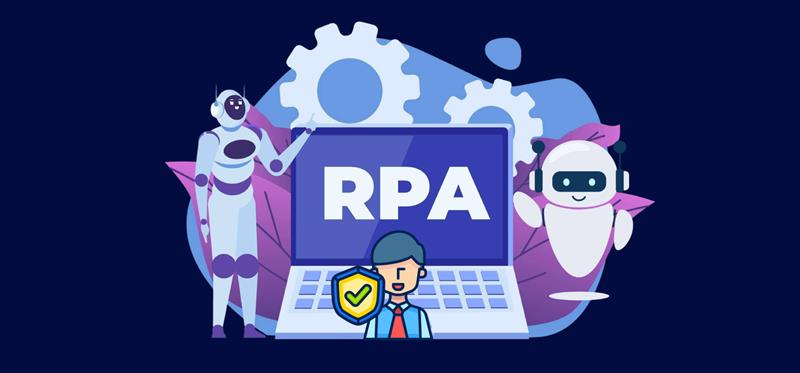RPA in Insurance Industry: Streamlining Underwriting, Claims, and Data Management Processes
The insurance industry depends on accuracy, speed, and compliance; yet much of its operations still rely on repetitive manual work. Activities like underwriting, claims validation, and data entry often consume hours and are prone to human error.
In 2021, the global RPA in insurance market stood at US$98.6 million and is expected to surge to US$1.2 billion by 2031, expanding at a CAGR of 28.3%. (Allied Market Research)
This is where RPA in insurance plays a transformative role. Robotic Process Automation enables insurers to automate routine, rule-based workflows across policy servicing, compliance checks, and customer communication. It doesn’t replace employees; it amplifies their efficiency by letting bots handle the repetitive tasks while humans focus on analysis and customer engagement.
How Does RPA Simplify the Underwriting Process?
Underwriting requires careful evaluation of risk based on multiple data sources, medical records, financial statements, and customer disclosures. Traditionally, this involves time-consuming data gathering and validation.
With RPA in insurance sector, bots automatically collect, analyze, and input relevant information into underwriting systems. This not only speeds up policy approvals but also improves consistency and decision accuracy.
Key Benefits of RPA in Underwriting:
- Automated Data Collection: Bots extract applicant data from forms, emails, and third-party databases.
- Risk Assessment Assistance: Predefined rules help bots categorize applications based on risk levels.
- Policy Creation and Approval: RPA populates policy templates, ensuring that documents are generated without manual entry errors.
- Audit-Ready Records: Each underwriting action is logged, providing transparency and traceability.
Traditional vs. Automated Underwriting
| Step | Manual Workflow | With RPA |
| Data Gathering | Manually extracted from multiple sources | Automatically pulled from integrated databases |
| Risk Evaluation | Human-driven rule application | Bots pre-screen and flag anomalies |
| Document Preparation | Manually created and verified | Auto-filled templates with instant validation |
| Approval Cycle | Multi-step manual review | Streamlined workflow with automated triggers |
Can RPA Transform the Claims Management Process?
Claims management often defines the customer’s perception of an insurer. Delays, incomplete documentation, and inconsistent communication can erode trust. RPA in insurance industry brings structure and speed to the entire claims lifecycle, from submission to settlement.
How RPA Streamlines Claims Handling:
- Claim Intake: Bots extract information from claim forms, verify policy details, and categorize claims instantly.
- Validation and Fraud Detection: Automated cross-checks against policy records and databases flag inconsistencies or potential fraud.
- Communication Automation: Customers receive real-time updates on claim status without manual intervention.
- Payment Processing: Once approved, bots initiate settlement workflows, ensuring timely payouts and audit compliance.
With RPA handling repetitive validation tasks, adjusters can focus on complex claims that require human judgment and empathy.
In the USA, insurance companies automate around 50% of claims processing, resulting in faster payouts and up to a 35% boost in customer satisfaction. (Industry Research)
What Role Does RPA Play in Data Management and Regulatory Compliance?
The insurance industry handles enormous volumes of structured and unstructured data daily- customer information, policy details, claims documents, and compliance records. Managing and securing this data manually can lead to duplication, delays, or non-compliance.
RPA in insurance sector ensures that all data-related activities follow standardized workflows and are traceable at every step.
RPA Advantages in Data Management:
- Automated Data Entry: Bots input data accurately into core systems without missing fields or mismatches.
- Data Migration: When systems are upgraded, bots transfer records between platforms without downtime.
- Regulatory Reporting: RPA ensures the timely submission of reports aligned with local and international insurance regulations.
- Data Integrity Monitoring: Bots continuously audit databases for consistency and flag discrepancies before they become issues.
By integrating RPA into data management, insurers achieve both efficiency and compliance without expanding operational overheads.

What Are the Broader Organizational Benefits of RPA in Insurance?
Beyond individual process improvements, RPA drives strategic benefits that elevate an insurer’s overall performance.
Broader Impacts Include:
- Operational Consistency: Every process follows predefined logic, ensuring uniform results.
- Improved Customer Experience: Faster policy issuance and quicker claims resolution enhance satisfaction.
- Cost Efficiency: Reduced manual workload translates to lower operational expenses.
- Scalability: As customer demands grow, bots can handle higher workloads without adding new staff.
- Data-Driven Insights: Structured and accurate data enable better decision-making and forecasting.
RPA, when combined with analytics and AI tools, creates a foundation for long-term digital transformation within the insurance ecosystem.
How Can Insurers Begin Implementing RPA Effectively?
Starting with RPA in insurance doesn’t demand a full-scale transformation. The key is to identify repetitive, rule-based tasks that can be automated without disrupting existing processes.
Steps to Get Started:
- Process Mapping: Identify high-volume processes such as claims processing or policy servicing.
- Tool Selection: Choose an RPA platform compatible with legacy systems and secure enough for sensitive data.
- Pilot Automation: Begin with one process, measure outcomes, and refine workflows before scaling.
- Integrate with Core Systems: Connect bots with CRMs, policy management tools, and data warehouses.
- Monitor and Evolve: Continuously review bot performance and adjust for business changes or new regulations.
A gradual, well-planned rollout ensures smooth adoption and measurable efficiency gains.
Conclusion
RPA in insurance industry is redefining how insurers manage underwriting, claims, and data operations. It ensures faster processing, consistent accuracy, and full regulatory compliance while allowing human teams to focus on complex and customer-facing tasks.
As insurance companies continue their digital evolution, adopting RPA is not just about automation; it’s about resilience, transparency, and smarter business performance.
FAQs
What is RPA in the insurance industry?
RPA automates repetitive, rule-based tasks like claims processing, data entry, and policy servicing using software bots.
How does RPA help in underwriting?
RPA accelerates data gathering, risk evaluation, and policy generation, reducing manual errors and approval times.
Can RPA detect fraud in insurance claims?
Yes. Bots cross-check claim details against policy data and predefined rules, helping identify anomalies and potentially fraudulent activities.
Is RPA suitable for all types of insurance companies?
Yes. Whether life, health, or general insurance, RPA can be adapted to streamline back-office and customer service operations.
Does RPA replace human employees in insurance operations?
No. RPA supports human teams by handling repetitive work, allowing professionals to focus on tasks that need reasoning, empathy, or decision-making.

 contact
contact

 By
By 


